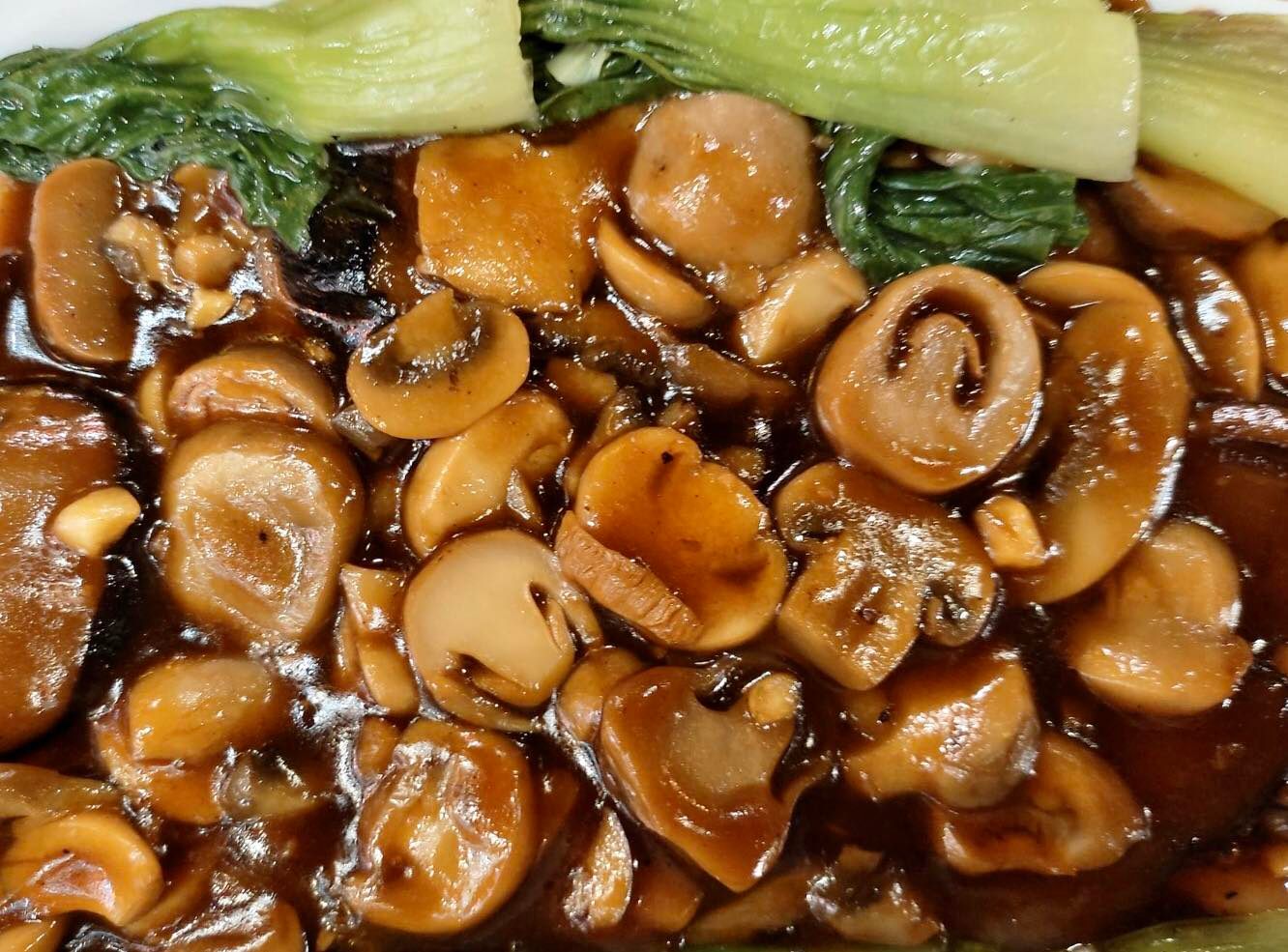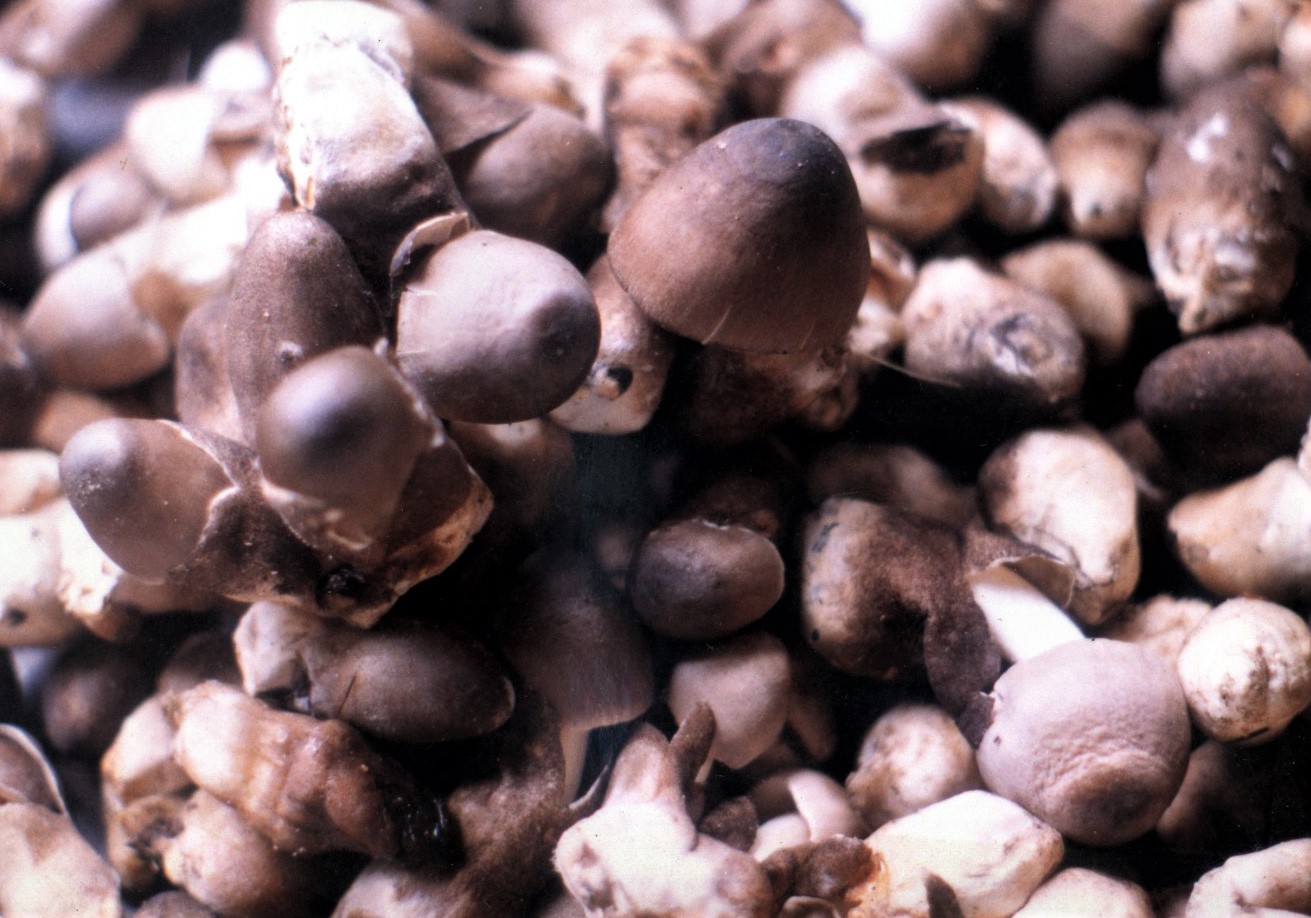Text and Photos by Henrylito D. Tacio
Let’s start this with a quiz: It’s not an animal, a plant, or a mineral. It is both edible and toxic, vegetarian yet meaty in flavor, wild and domesticated, a contemporary health craze, and an ancient remedy. It can send your mind on a wild hallucinogenic flight. It can also kill you.
If you are following the Reader’s Digest series, “I am the Food in Your Plate,” then you know the answer. Yes, you are right – mushroom.
These days, as people become more health-conscious, more and more Filipinos are eating mushrooms. Since 1995, the mushroom industry has been booming due to the huge demand. Unfortunately, most of the mushrooms Filipinos consumed were imported from other Asian countries like China, Taiwan, Thailand, Malaysia, Korea, and Japan.
More than 100,000 varieties of mushrooms have been discovered, of which 2,000 are reportedly edible or fit for human consumption. In the Philippines, there are ten varieties of edible and medicinal mushrooms being grown. These are paddy straw, oyster, shiitake, button, ear fungi, milky, yellowish oyster, reishi, lion’s mane, and king tuber oyster.
It’s time for Filipinos to grow their own mushrooms. “Mushroom production can be a viable source of income for farmers with quick returns from low investment,” said Peñafrancia Gordo, the mushroom focal person of the Davao regional office of the Department of Agriculture.
Aside from its profitability, going into this kind of agriculture venture may help promote better farm waste management as rice straws and dried bananas are utilized as raw materials.
The Philippines is one of the world’s top producers of rice. A total of 10,680 gigatons of rice straw are produced per year, a paper said. Much of this is burnt in open fields or merged in the soil in wet conditions during ploughing.
In recent years, the Philippines has been in the top five banana exporters in the world, exporting around 3.5 million tons of banana fruits annually. Davao region is among the highest banana producers. Instead of burning those banana leaves, they can be used for mushroom production.
Unlike other farming schemes, mushroom cultivation is not really labor-intensive. “It can be an ideal activity for housewives, senior citizens, and for differently-abled persons to be financially independent,” said Noel T. Provido, former DA regional information officer.


Yes, there’s money in growing mushrooms in your backyard. Ask Rosario Campo of Carmen, Davao del Norte, who has been growing straw mushrooms since 1992. According to her, growing mushrooms doesn’t take so much of her time, and it requires minimal financing.
“In just 12 days from planting, you can start harvesting and earn income,” she pointed out. She believed that from growing mushrooms, she will be able to raise the much-needed P250,000 for her daughter’s practicum abroad.
Economic analysts see mushrooms as another major Philippine crop. The local market for the crop is reportedly growing. In several Makati supermarkets, mushrooms are among the fast-selling items in their vegetables section.
Some local supermarkets in Metro Manila shelves have begun to carry canned mushrooms imported from China. “It’s a pity that we have to import because we can produce the mushrooms ourselves,” says an entrepreneur who’s into mushroom production.
Generally speaking, many Filipinos still have to develop a liking for mushrooms. Studies indicate only about 10 percent of the current population of more than 100 million regularly consume them.
“It is regrettable that, to date, cultivating mushrooms has been almost ignored in many developing countries, even though it could contribute significantly to feeding their population, for edible mushrooms are delicious and nutritionally valuable,” deplores Jan Lelley, who wrote an article on mushroom growing.
Actually, the mushroom is not a vegetable, although people consider it as such. “All mushrooms are fungi, and they produce spores, similar to pollen or seeds, which allows them to spread or travel by the wind,” wrote Nicola Shubrook for the British Broadcasting Corporation’s website. “The rest of the mushroom then matures, typically living in soil or wood.”
Nutrient density is the term used to describe the concentration of nutrients per calorie offered by a given food. In his book Eat for Health, Dr. Joel Fuhrman ranks a variety of foods based on their nutrient density, and mushrooms score 134, which is higher than most fruits, including blueberries and raspberries, some vegetables, and all meat, eggs, and dairy products.
There are several ways of growing mushrooms, as there are several types of mushrooms. Most of them can be grown with little space and require little time. Since rice straws and dried banana leaves are plentiful, people can start growing mushrooms using these free and thrown away materials.
Below are the fundamental techniques involved in the culture of banana or rice straw type of mushroom. This information comes from the Bureau of Plant Industry, which is now producing mushroom spawn in abundance:
Dry rice straws and banana leaves are the most common types of bedding materials. If these are not available, you may use other materials like cotton wastes, jute sacks, corn stalks, water hyacinth, sugar bagasse, and abaca waste.
Gather long, clean, and well-dried rice straws and banana leaves, preferably those that are still standing in the field. As much as possible, avoid using old and contaminated bedding materials.
Then, bundle the bedding materials 6-8 inches in diameter. If rice straws are used, arrange butt ends together. The bundle materials are cut 1.5 to 2 feet long.
Soak the bundled materials in water for at least 3 hours but not more than 10 hours until enough moisture is absorbed by the materials. Be sure to have a foundation serving as support for the bed. Set the soaked-bundled materials closely-knit them together, evenly and compactly.
Water the bed well with the urea or ammonium sulfate at a rate of one to two tablespoons per gallon of water. Add sugar at the rate of 33 grams per gallon of water to improve the yield of mushrooms. Press the layer to the level of the surface. Stop watering when the water starts to drip off the bed.
Insert thumb-size prawns around the bed, four inches from along the side and four inches apart from each other. Never plant spawn in the middle of the bed. Set the second layer of straw on top of the first layer. Put the butt ends together in two opposite directions. Water and press down. Follow the same procedure until a six-layer bed is attained.
When the bed is made, it may be best to cover it with a plastic sheet, gunny sack, or any suitable materials to protect it from the drying effect of the wind and to keep it humid.
Remove the cover only after seven days. Don’t water the bed as it is still wet. Watering should be done only in amounts, which would keep the surface moist and its environs humid.
Watering may be done using a sprinkler, passing the same over the bed and along the sides. Avoid soaking the bed as this condition is equally harmful to the proper development of the mushrooms as insufficient watering.
The growth of mushrooms on the bed comes in flushes. With adequate maintenance and care, the first flush usually comes and flushes from 13 to 15 days following seeding. When a flush is on, watering must be avoided. Watering is resumed when the flush is over.
Harvesting is done in the following manner:
1. Harvest the whole mushroom, including the stump. Don’t leave any stump in the bed as this would rot, and in rotting, the adjacent mushroom may be affected.
2. As much as possible, care must be taken not to disturb the small buttons.
3. Mushrooms in the button stage of growth are more succulent; hence they are better preferred than the fully opened ones.
4. Harvested mushrooms may be placed in trays or in kaings.
By the way, not all mushrooms can be eaten. In fact, there are a number of species of mushrooms that are poisonous, and although some resemble certain edible species, eating them could be fatal. “Eating mushrooms gathered in the wild is risky,” experts usually caution.
Claudius II and Pope Clement VII were both killed by enemies who poisoned them with deadly mushrooms. Buddha died, according to legend, from a mushroom that grew underground. Buddha was given the mushroom by a peasant who believed it to be a delicacy.
The most recent tragedy that involved mushrooms happened in 2011. Reader’s Digest reports: “On New Year’s Eve, mistaking the death cap mushroom for edible straw mushrooms used in Chinese cooking, a 38-year-old Canberra chef and 52-year-old friend both died in hospital of liver failure 48 hours after eating a meal he prepared with the deadly fungus.”
In November 2012, The Atlantic published an article stating that only about 50 to 100 are toxic. The website of Organic Facts reiterates: “Some species of mushrooms are not edible, are highly poisonous and look strikingly similar to their edible counterparts. Don’t ever try picking mushrooms for consumption from the woods unless you have been trained to identify them very well.”

